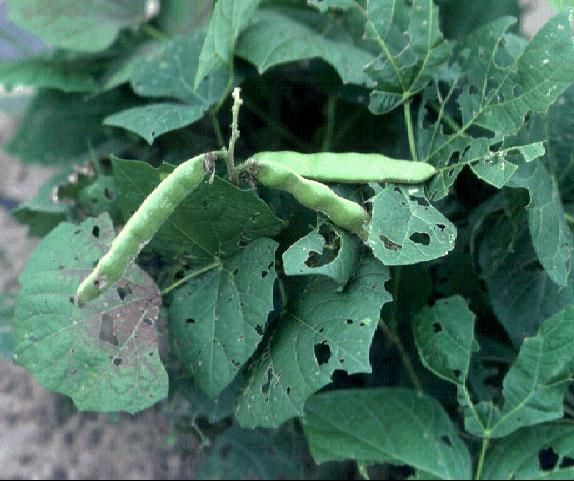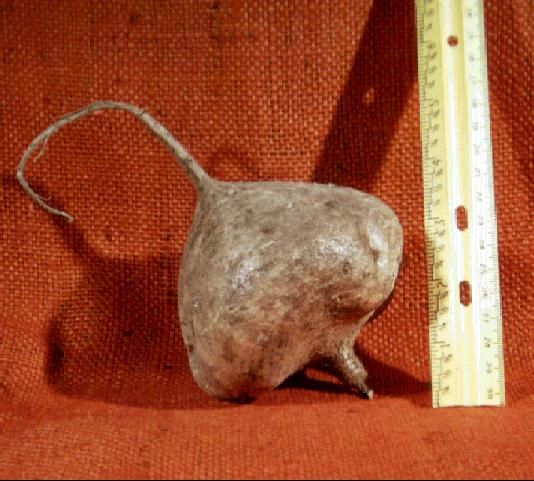Jicama—Pachyrhizus erosus (L.) Urban1
Jicama (pronounced "hecama") is also known as yam bean and Mexican turnip. It is not related to the true yam. The name jicama is also used in Spanish for any edible root. It is a climbing legume with very long and large tuberous roots, which in 5 months of growth may reach 6 to 8 feet long and weigh 50 pounds or more. More often, roots are round and beet-shaped with a distinctive taproot.
The vining tops, which reach 10 to 20 feet in length, have compound leaves with pointed edges, and bear white flowers and green lima bean-shaped pods. These pods are borne in clusters of around six pods per cluster, and may reach 8 to 12 inches in length and 1 inch in width.

Credit: James M. Stephens
Use
The edible portion is the starchy root, which is eaten raw or cooked. The crisp white interior flesh tastes like a delicious cross between a waterchestnut and an apple. Jicama is often used as a substitute for water chestnut in oriental cooking. As a vegetable, it is very important and popular in Mexico. It is sometimes served raw with a spread of olive oil, paprika, or other seasoning. The tough brown skin is easily peeled. As a word of caution, eat only the roots. The leaves, stems, ripe pods, and seeds may be poisonous.

Credit: Blue Goose, Inc.
Culture
Jicama is grown only occasionally in Florida in home gardens. Commercially, it is produced to some extent in such tropical regions as Puerto Rico, Hawaii, and Mexico, and in warm regions of the southwestern United States. Besides P. erosus there is a larger rooted type called P. tuberosus. Both are similar except for the size of the root.
Jicama does best in a warm climate with moderate rainfall and is sensitive to frost. When planted from seeds, about 5 to 9 months of warm weather are required before large roots are produced. However, mature roots may be produced after just 3 months if started from whole small roots. Removing the flowers seems to enhance yields.


